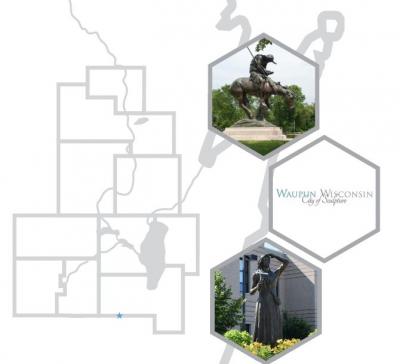Comprehensive Plan Update 2040
Adopted October 9, 2018
Prepared by the East Central Wisconsin Regional Planning Commission
Chapter 1: Issues and Opportunities
An overview of the planning process, information regarding the demographics and socioeconomic conditions and growth patterns and an inventory of the employment and income characteristics.
Chapter 2: Housing
A compilation of the goals, objectives, policies, recommendations and applicable programs related to housing. An assessment of existing housing stock including age, structural type, value, occupancy characteristics, tenure, senior housing and subsidized.
Chapter 3: Transportation
A compilation of the goals, objectives, policies, recommendations and applicable programs related to transportation. An assessment of existing transportation facilities including highways, transit, systems for persons with disabilities, bicycles, walking, railroads, air transportation, trucking and water transportation.
Chapter 4: Utilities and Community Facilities
A compilation of the goals, objectives, policies, recommendations and applicable programs related to utilities and community facilities. An inventory and assessment of utilities and community facilities such as wastewater, stormwater management, water supply, solid waste disposal, recycling facilities, parks, telecommunication facilities, powergenerating plants and transmission lines, health and child care facilities, police, fire and rescue facilities, libraries, schools and other governmental facilities.
Chapter 5: Agricultural, Natural and Cultural Resources
A compilation of the goals, objectives, policies and recommendations related to agricultural, natural and cultural resources. Background information for the conservation, and promotion of the effective management of natural resources such as groundwater, forests, productive agricultural areas, environmentally sensitive areas, threatened and endangered species, stream corridors, surface water, floodplains, wetlands, wildlife habitat, metallic and nonmetallic mineral resources, parks, open spaces, historical and cultural resources, recreational resources and other natural resources.
Chapter 6: Economic Development
A compilation of the goals, objectives, policies and recommendations related to economic development. An inventory of the labor force, income characteristics, commuting patterns, economic base information to promote the stabilizations, retention or expansion of the economic base.
Chapter 7: Intergovernmental Cooperation
A compilation of goals, objectives, policies and recommendations related to intergovernmental cooperation. An inventory of intergovernmental relationships, including school districts, state agencies, counties and adjacent local governmental units, special districts and local organizations for fostering intergovernmental cooperation, siting and use of public facilities and sharing public services.
Chapter 8: Land Use
A compilation of goals, objectives, policies and recommendations related to land use. An assessment of the amount, type, intensity and net density of existing land uses such as agricultural, residential, industrial and other public and private uses; an analyzes of the trends in supply, demand and the price of land, and opportunities for redevelopment. A discussion of the proposed future land use framework.
Chapter 9: Implementation
A compilation of goals, objectives, policies and recommendations related to implementation. A listing of programs and specific actions to be completed in a stated sequence, including proposed changes to applicable zoning ordinances, official maps, sign regulations, erosion and stormwater control ordinances, building codes, mechanical codes, property maintenance and housing codes, sanitary codes, subdivision ordinances, to implement the objectives, policies and recommendation contained in the other elements.


